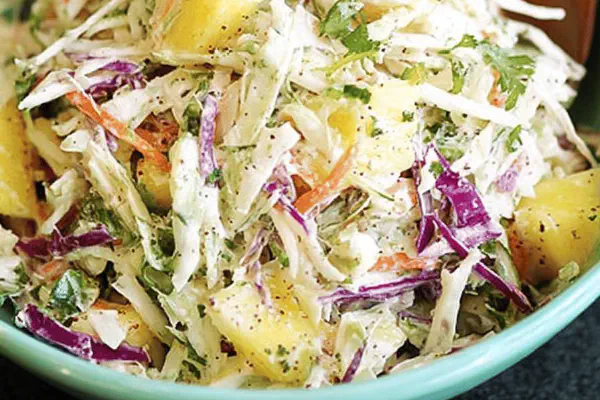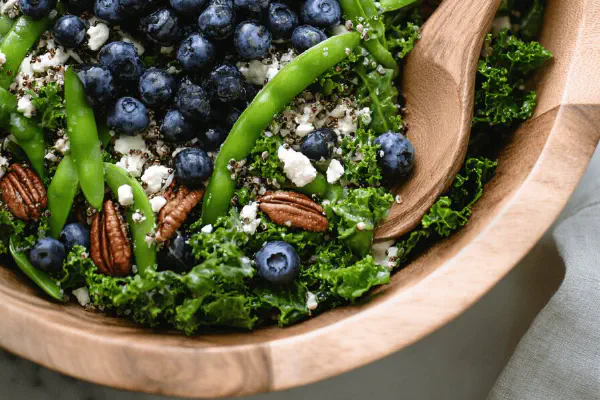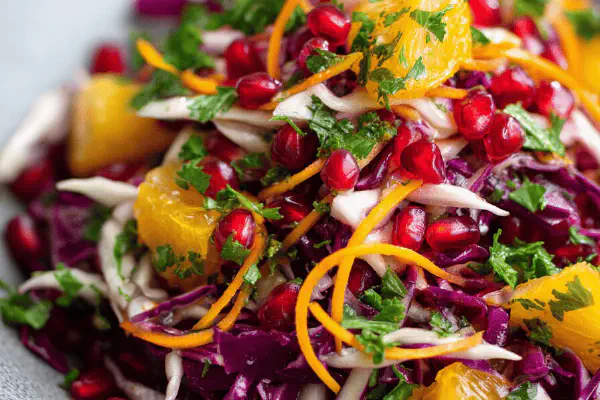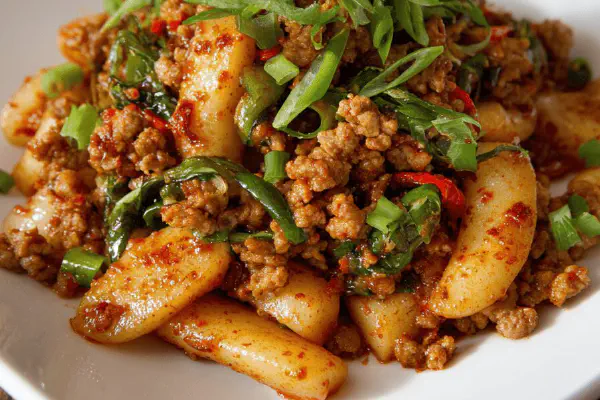Tangy Kimchi Salad Toss
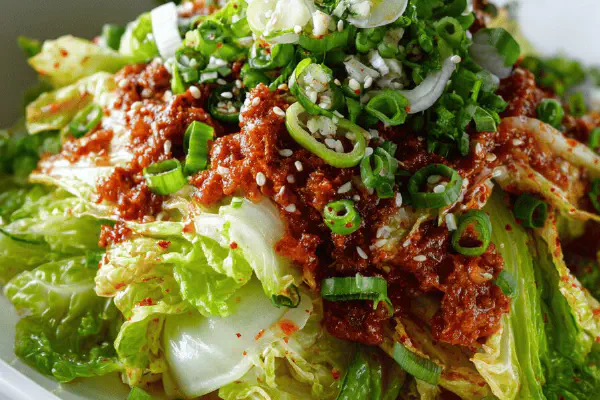
By Emma
Certified Culinary Professional
Ingredients
- 500 g (about 5 cups) napa cabbage, cut into 1 cm thick strips
- 12 ml (2 1/2 tsp) kosher salt or sea salt
- 30 ml (2 tbsp) gochugaru Korean chili powder, adjust to taste
- 15 ml (1 tbsp) toasted sesame seeds, smashed lightly
- 10 ml (2 tsp) granulated sugar, can use honey or agave
- 20 ml (1 1/3 tbsp) toasted sesame oil
- 15 ml (1 tbsp) fermented shrimp paste (optional), can substitute with white miso
- 7 ml (1 1/2 tsp) rice vinegar
- 6 ml (1 1/4 tsp) finely minced fresh ginger
- 2 cloves garlic, finely minced or grated
- 2 green onions, sliced thin
About the ingredients
Method
Napa Cabbage Preparation
- Toss cabbage strips with salt in a large bowl. Massage vigorously for 2-3 minutes until it starts to soften and wilt. Let sit uncovered (or loosely covered) at room temp around 25 minutes until just tender but still crisp—almost translucent edges and slight bend when pinched. You’ll notice water pooling — that’s good, don’t drain yet.
Dressing Mix
- While cabbage softens, whisk chili powder, sesame seeds, sugar, toasted sesame oil, fermented shrimp paste (or miso), rice vinegar, minced ginger, and garlic in a separate bowl. Smell the layers: smoky, spicy, earthy, faintly funky if using shrimp paste. Adjust chili to your heat tolerance—start with less, can always add later.
Rinse and Drain
- Once cabbage looks limp but not mushy, quickly rinse under cold water to remove excess salt. This stops further breakdown and balances saltiness. Squeeze gently but firmly with hands to shed water without crushing cabbage texture. If too wet, pat lightly with paper towel or leave to drain for a few minutes. No puddles allowed or dressing dilutes.
Final Assembly
- Return cabbage to dressing bowl, add green onions, toss vigorously to coat evenly. Mix until cabbage glistens deep red-orange and you hear slight crunch beneath your hands. Taste. If too fiery, add a splash more sugar or a drizzle of oil. If flat, a touch more vinegar or miso. Rest in fridge 10-15 minutes if you want flavors to meld, but it’s good right away — lively and fresh.
Tips and Tricks
- • Salt quantity matters. Too little and cabbage stays tough; too much makes overly salty kimchi salad. Feel the texture—soft but retains crunch is the sweet spot.
- • Fermented shrimp paste brings authentic umami but tricky to find or off-putting for some. White miso works nicely, milder but improves depth.
- • If short on gochugaru, sub with cayenne or smoked paprika for different flavor profiles.
- • Crushing sesame seeds lightly before adding unlocks nuttier aroma than just tossing whole.
- • This isn’t a fermenting kimchi; treat as salad or quick pickle. Store in airtight container for up to 3 days but best fresh.
- • To save time, prep dressing while cabbage salts—parallel work speeds kitchen moves.
Cooking tips
Chef's notes
- 💡 Salt napa cabbage well, massage firm but not sloppy. Watch edges turn translucent, leaves bend with gentle pressure. If soggy, cabbage loses crunch fast. Timing crucial—about 25 mins at room temp. Water pooling means salt pulling moisture ready for rinsing but don’t drain early or texture gets off.
- 💡 Dressing needs balance; chili powder heat can be less if sensitive. Use white miso if shrimp paste not on hand—adds mellow depth without funk but loses umami punch. Toast sesame seeds dry in pan, light color shift and nutty smell. Smash lightly to unlock fragrance but keep bits for texture in final salad.
- 💡 Quick rinse cold water stops salt action. Squeeze firmly but don’t crush cabbage or dressing won’t cling right. Dry enough or dressing waters down, less punch in every bite. Pat or drain well. Excess moisture kills mouthfeel and dulls color. Red-orange hues come from chili oil mixing with cabbage moisture.
- 💡 Toss cabbage and dressing repeatedly. Look for shiny wet folds, slight crunch under fingers not mush. Adjust sugar last – more if heat too sharp, vinegar if flat. Let rest in fridge 10-15 to marry flavors but eat soon or crisp fades. This salad is alive when fresh, texture dulls fast after.
- 💡 Prep dressing while cabbage salts, parallel work saves time. Mince garlic and ginger small for flavor bursts without chunks dominating. Slice green onions thin for snap not bulk. Crushing sesame before adding lifts aroma—it’s subtle but changes whole salad character. Salt amount critical; less means tough leaves, more means over-salty bitter bite.
Common questions
Can I skip rinsing cabbage?
Not really. Salt keeps softening if you skip rinse. Texture goes mushy fast. Rinsing hits pause on salt. Makes crunch hold. Without rinse salt can be overpowering, bitter too. Better rinse fast under cold water, then squeeze dry.
What if no fermented shrimp paste?
Use white miso, definitely. Miso adds mellow earthiness without funk that shrimp paste brings. Sometimes skip both if want cleaner flavor but lose umami depth. Cayenne or smoked paprika sub for gochugaru if needed, less traditional but close in spice.
My cabbage got soggy. Why?
Too much salt or forgot rinse step. Or left salad too long after dressing toss. Salt pulls water, makes cabbage limp—rinse stops process, if skipped limp turns soggy quickly. Also squeezing hard removes water but if too wet and dressing added, dilutes flavor and softens crunch.
How to store leftovers?
Airtight container fridge only, best under 3 days max. Texture softens after 24 hours, color dulls. Can revive slightly by tossing again but not same crisp. Avoid room temp longer than few hours. No freeze, turns mushy and color loss.
